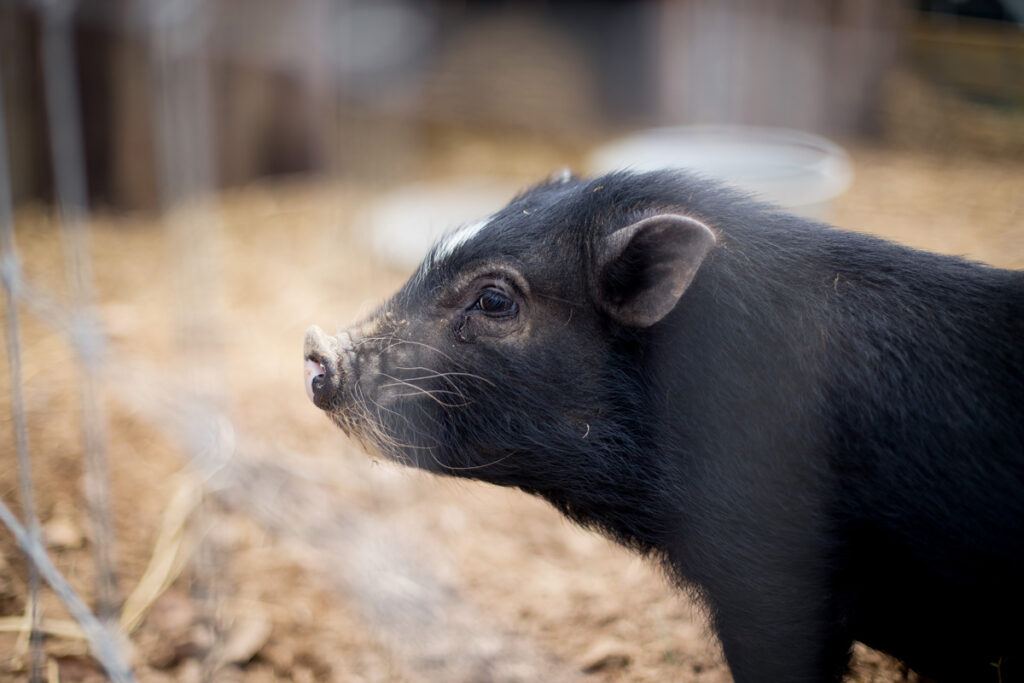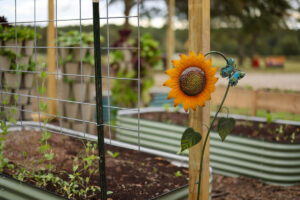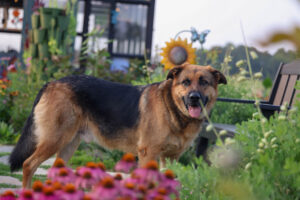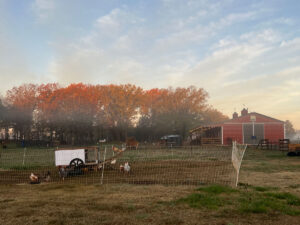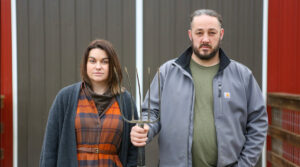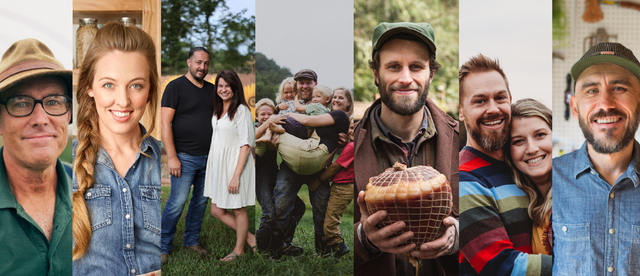Understand the definition of farrowing pigs, and be prepared to build a pen, crate, or box to house piglets when the sow relocates to the barn from the pasture.
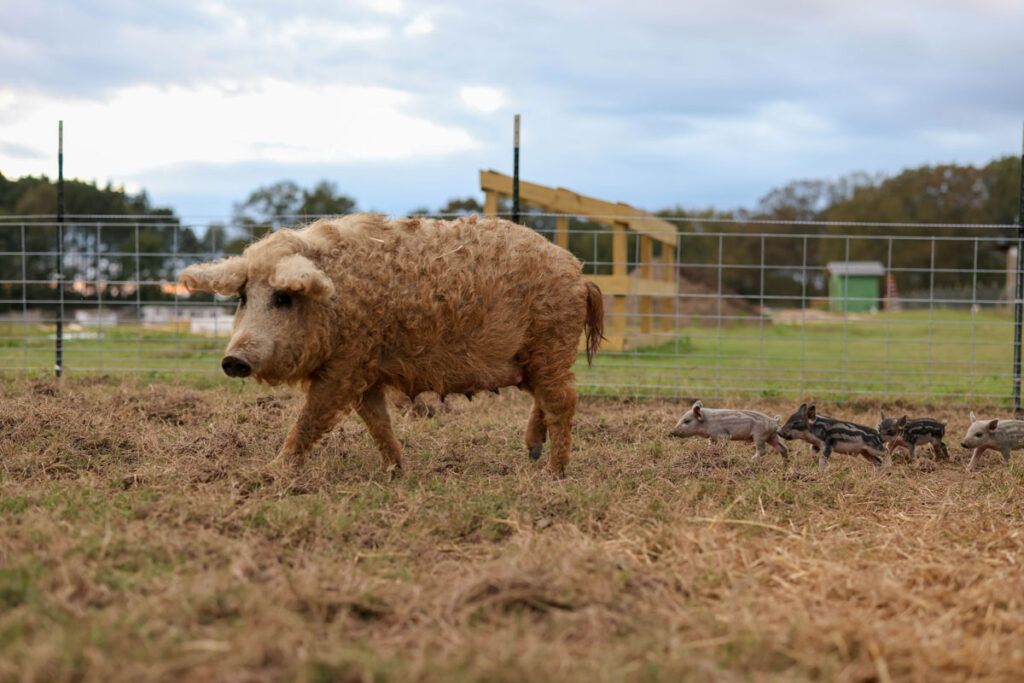
We raise our own meat here on the homestead, and have found great value in breeding our own animals, and in that, choosing heritage breeds such as Mangalista pigs.
Whether you are a homesteader or a factory pig farmer there are some basic needs for farrowing pigs. A farrowing pig needs to feel safe and secure during the process of birthing the piglets.
Having a barn with a pen, crate or box in it will definitely help the transition from the pasture. You can learn how to build a pig shelter on a budget to become prepared for your farrowing pigs.
We focus on the natural way of farrowing our pigs. It is always a blessing to witness the birth of any animal on the homestead. In the words of my son, Tobey, a farrowing pig is a “kind of gross, but cool” experience.
What Does Farrowing Mean?
The definition of a farrowing pig in simple terms is a pig giving birth to a litter of piglets. A female pig can have up to two litters in a year with 6 to 14 piglets per litter.
The size of the litter will depend on the size and breed of your pig and whether or not it is a first-time pregnancy. Small litters are between 3 to 10 piglets, medium litters will be 11 to 13 piglets, and large litters can be 14 to 19 piglets.
Pre-Farrowing (Pregnancy)
Your pig is now pregnant, so what’s next? Gestation time for a pig is 109 to 118 days, approximately three months, three weeks and three days. Knowing when a pig is due to farrow is important as you prepare your homestead for the new additions to the farm.
There is a difference between having a pregnant gilt and a sow. The difference is a gilt is a pig that has not farrowed yet, while a sow is a pig that has farrowed before.
When having a pregnant gilt, you need to watch it closely because you don’t know how she will react to birthing for the first time.
Keeping your pregnant swine on a feeding schedule will reduce stress and help the babies grow.
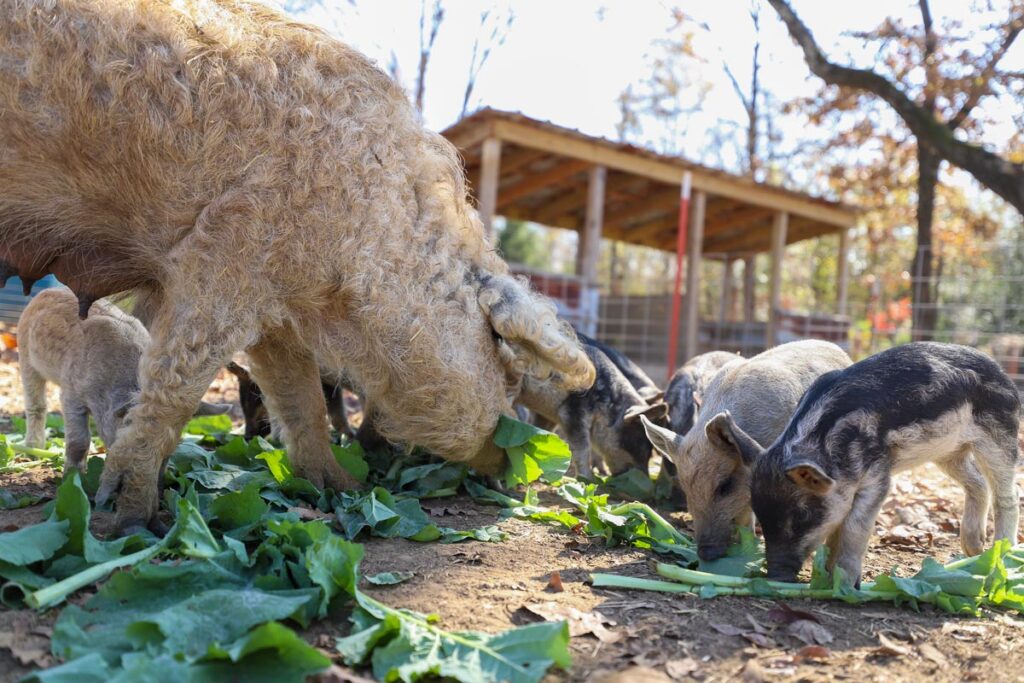
Creating the Right Farrowing Pen
You always want to create a secure and safe space for your pigs. Having your farrowing pen (or farrowing crate) clean and dry helps keep the piglets from getting sick.
It's always a good idea to have the doorway of your farrowing pen facing away from the prevailing winds to keep the temperature more stable.
Depending on your pig’s due date, you might need a heat lamp to keep the pen warm in late fall, winter and early spring. We have even used IBC totes to create a safe shelter for our farrowing pigs.
Nesting
Allow a couple of weeks before your pig begins to farrow to set up your stall, pen, or crate. Your pregnant pig will want to begin nesting about 7 to 10 days before farrowing.
Nesting is a natural maternal instinct causing your pig to gather hay, leaves, or straw to use as bedding material. During this time, we provide short straw and hay for them to gather and create their nest.
One strategy is to isolate your pregnant pig from the rest of your pigs just a couple weeks before they begin nesting. This will help protect the sow and piglets from unnecessary roughhousing.
We choose not to do this because we have heritage pigs. One great quality of heritage pigs is that they are known for assisting in farrowing. However, we provide nesting areas that are away from the rest of the herd if the pig chooses to keep some distance.
Farrowing Has Begun
There are three phases of the farrowing process.
- Preparation Phase
- Birthing of the Babies
- Birthing of the Placenta
Once farrowing has begun, it is important to keep an eye on your pig's progression in case of complications.
Preparatory Phase
A farrowing pig's body will begin to prepare just a few days before birthing. The piglets begin to drop down into the birthing canal by muscular contractions, and the cervix will be completely dilated by the end of this stage.
This will create slight discomfort in your pig. Some visual signs include enlarged teats, excretion of milk, and extreme nesting. She will want to lay down in her nest and self-isolate.
Birth of Piglets Phase
The piglets are coming! About an hour before birthing begins, your pig will lay in its nest and rest before visible contractions begin. Once visible contractions begin, your pig is officially farrowing.
When the hard contractions begin, and the first piglet is born, it can take up to 45 minutes before the next piglet is born. After the second piglet is born, it will take 10 to 20 minutes between each piglet after that (if the piglets are healthy).
If there is a stillborn piglet, it can sometimes cause a delay.
Piglets can be born head first or hind first without complications. Newborn piglets will still be attached to their umbilical cord, but it will break once the baby pig starts to move.
A momma does not usually clean the babies off. They clean themselves off when rubbing against momma while trying to nurse. Pro-Tip: You might want to take some paper towels and dry the babies off if it is cold outside. This will keep the babies from getting chilled.
Birth of Placenta Phase
Birthing of the placenta will happen 1 to 2 times during the farrowing process, but most of the placenta will come out after the piglets are birthed.
Once the piglets are born, it can take up to four hours before the last of the placenta is birthed. When this happens, check to see if any piglets are wrapped up in the placenta.
Farrowing Complications
It is not common for a swine to have complications during farrowing, but it can happen. This is why it’s always a good idea to watch the momma pigs during farrowing.
Some of the complications to be aware of include prolonged labor, excessive straining, stuck piglets in the birth canal, or piglets not breathing. In these cases, you or your vet will have to intervene.
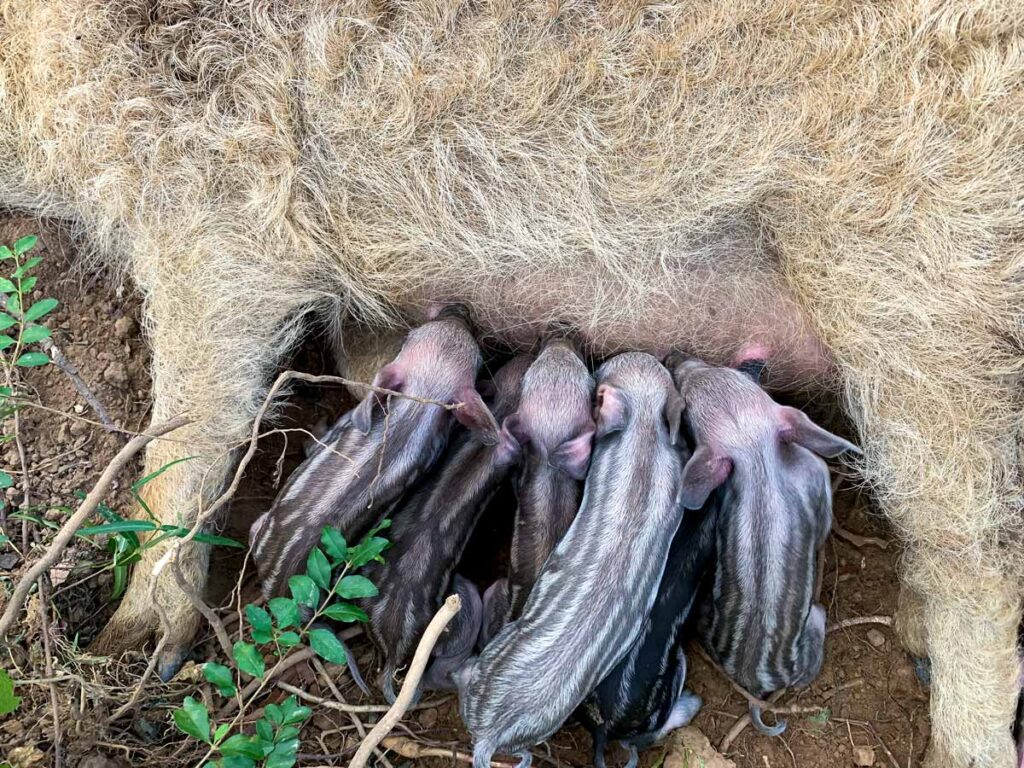
After Care Management of Piglets and Momma
Your sow and piglets will need some space now that farrowing is complete. After farrowing, momma will want to rest and feed her babies 95% of the time during the first 48 hours.
You will want to provide plenty of clean water and a little bit of food.
Lactating sows will need a lot of nutrition, but she will have a low appetite for a few days after farrowing. After a few days, you will want to start increasing her food.
During the first couple of weeks, you will want to watch momma to make sure no piglets are smothered or crushed. You should also monitor the piglets' growth to ensure normal development and body condition.
Now that you have baby piglets, you can enjoy these new and exciting additions to the farm.
